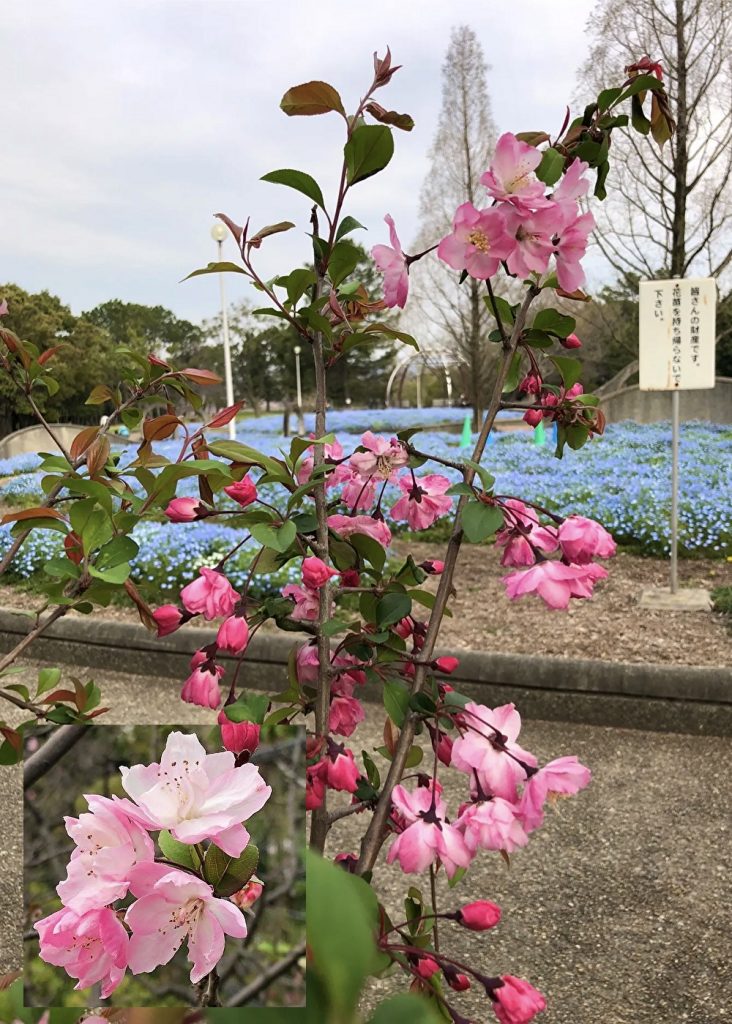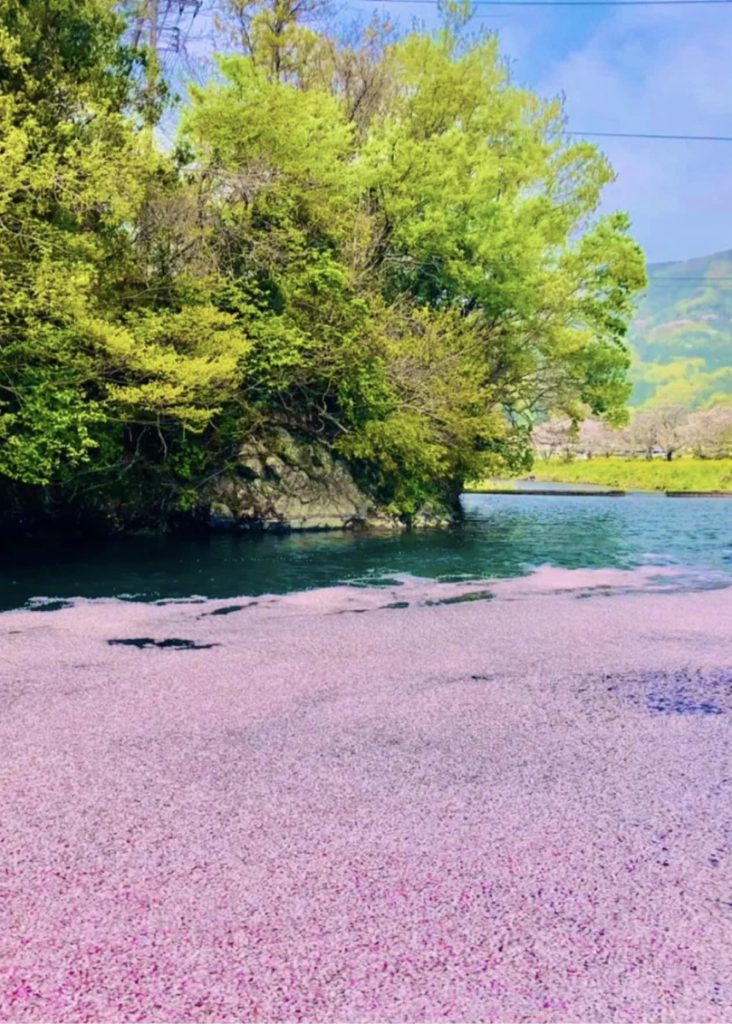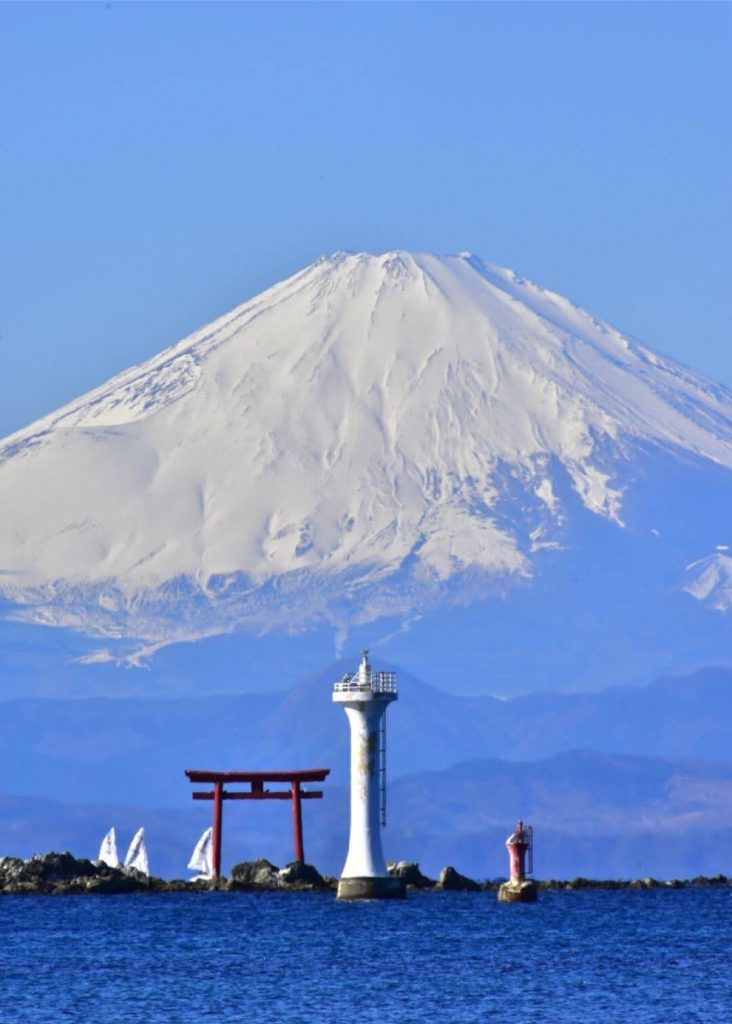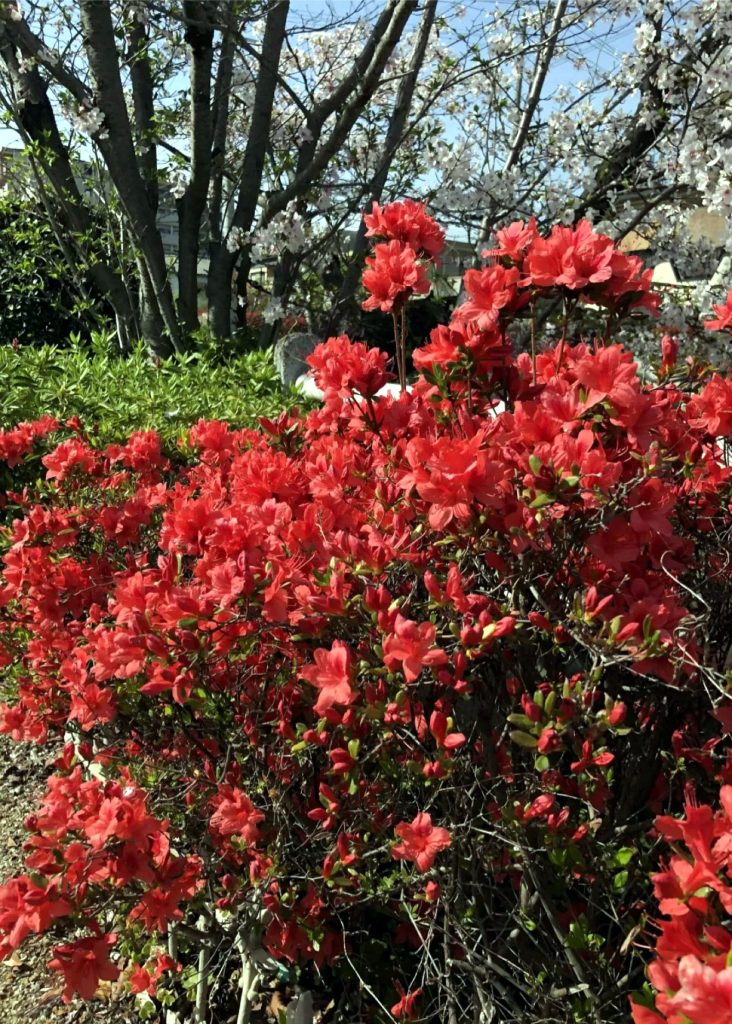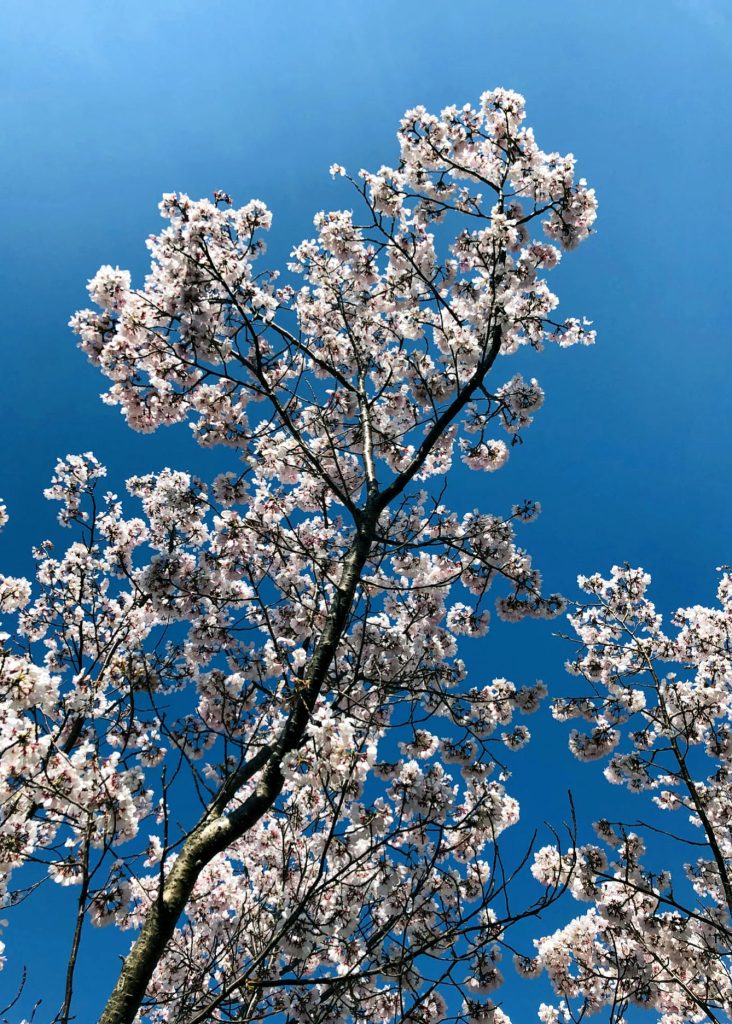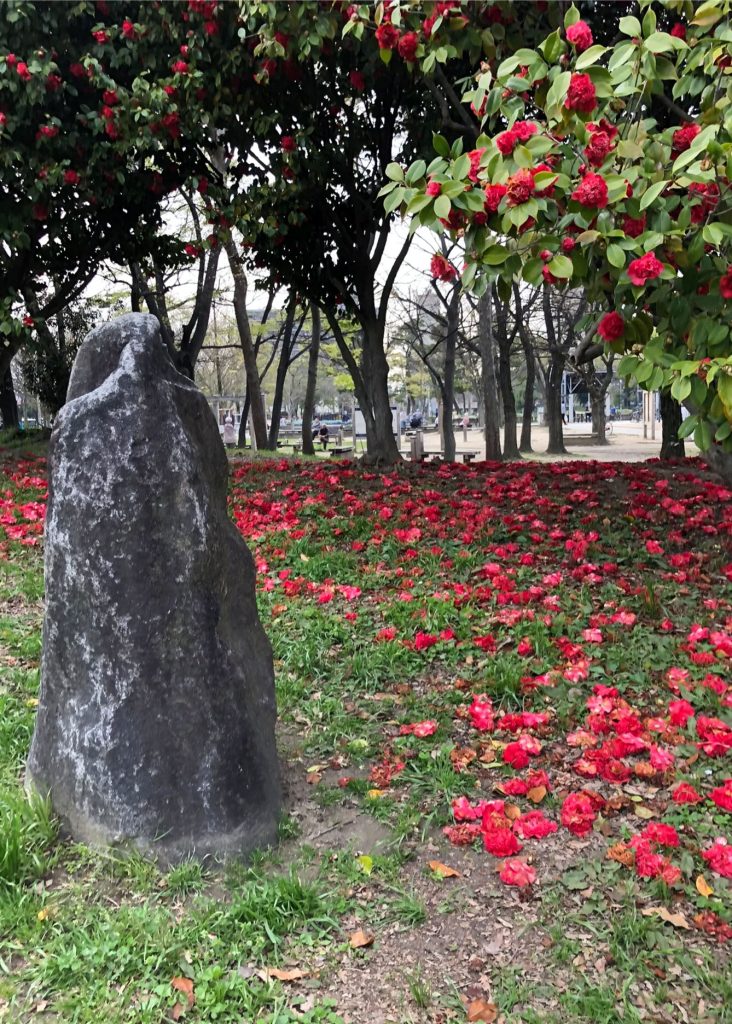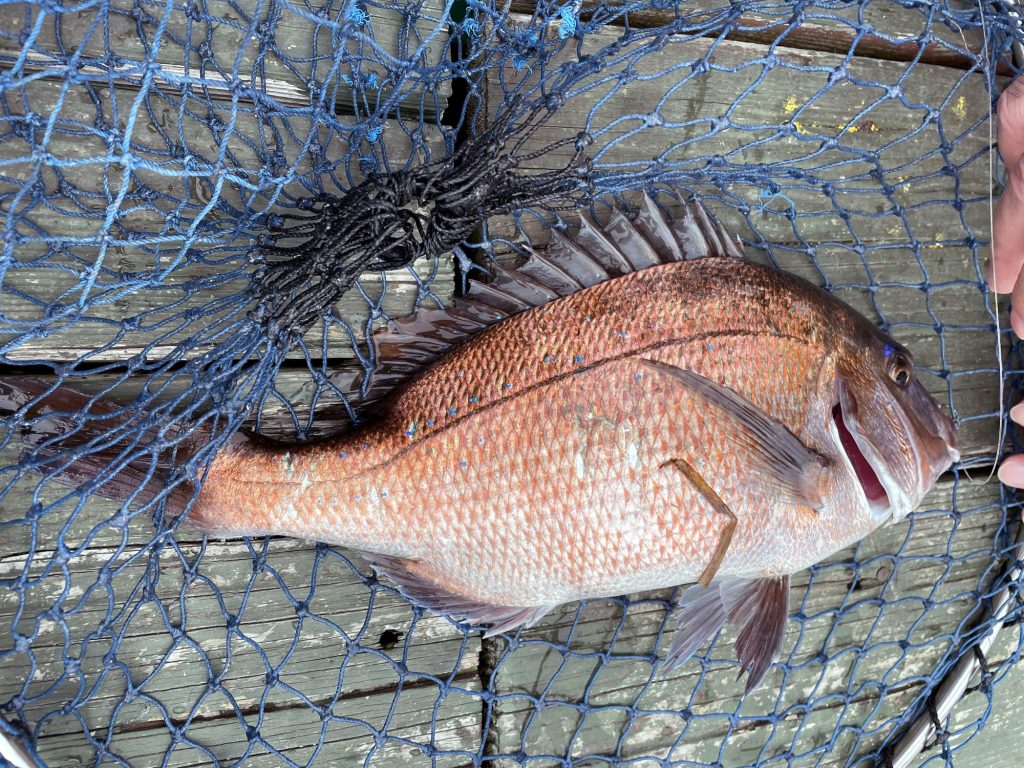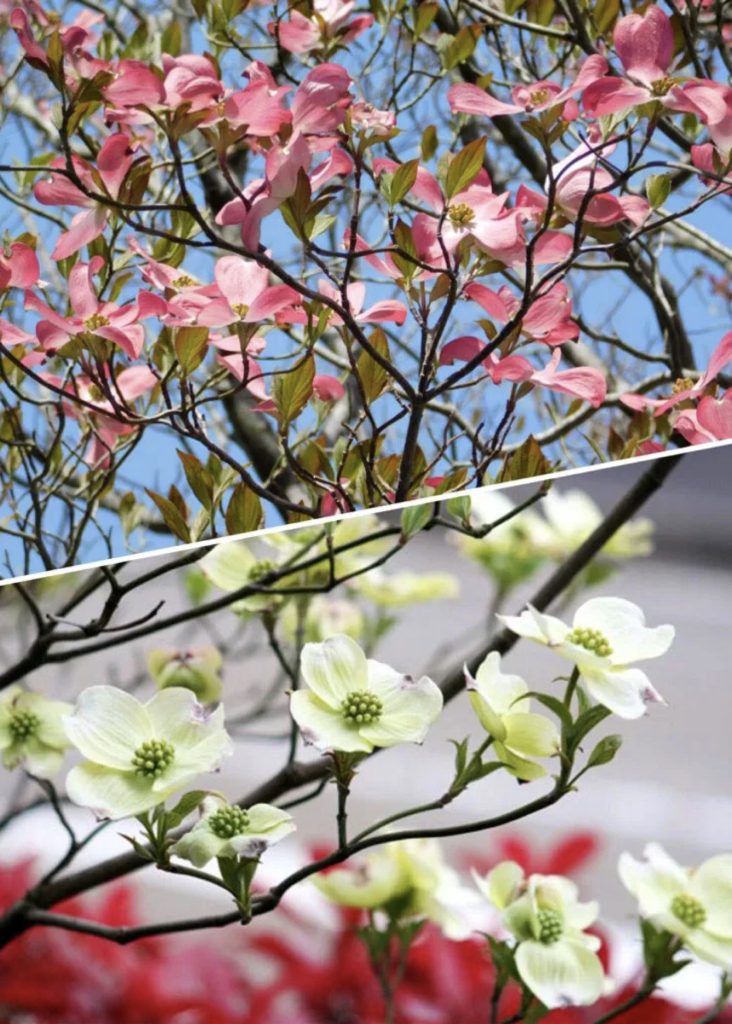
I brought a lunch and went to the nearby park to see the flowers. Most of the cherry blossoms along the way and in the park have already fallen, and instead, the red and white flowering dogwoods have begun to stand out. However, compared to the cherry blossoms, the number of flowering dogwoods is overwhelmingly small. Even so, they are still noticeable, but in the past, they were rarely seen in Osaka. In 1915, the flowering dogwoods were sent to Japan as a return gift from the people of Washington D.C. to the then Mayor of Tokyo, Yukio Ozaki, who had sent cherry tree saplings to them in 1912. Although the flowering period is quite long, the flowering dogwoods do not bloom as extravagantly as cherry blossoms, and their flowers are sparse and quiet, so they may not stand out like cherry blossoms. However, their quiet appearance is the charm of flowering dogwoods and gives a sense of tranquility. In their country of origin, America, the boiled juice of the flowering dogwoods was used as a skin medicine for dogs, so they were given the tasteless name “Dogwood”, but the Japanese name “Hanamizuki” has a charming emotional appeal.
近くの公園にお弁当を持って花の様子を見に出かけました。途中の桜も公園の桜もほとんどが葉桜です。代わって紅白の花水木が目立ち始めました。と言っても、桜に比べたら花水木は圧倒的に少ないです。これでもまだ目につく様になった方で、昔は大阪では滅多に見かけませんでした。花水木は、明治45(1912)年、当時の東京市長・尾崎行雄がアメリカ・ワシントン市の親日家たちにサクラの苗木を送った返礼として、大正4(1915)年に日本に送られてきました。花期は結構長いのですが、桜の様に咲き乱れると言う風でなく、花もまばらでおとなしいので、桜の様に目立たないのかもしれません。しかしそのおとなしい佇まいが花水木の魅力で、安らぎを覚えます。原産国のアメリカでは、花水木の煮汁が犬の皮膚薬に使われた為、Dogwoodと味気ない呼び名がついていますが、日本名の花水木は情緒があっていいですね。

